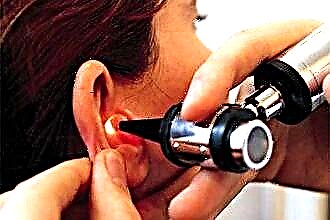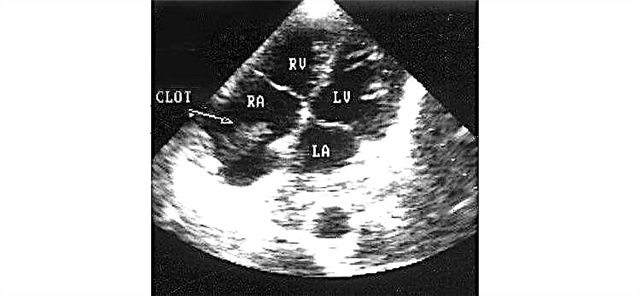The technique of how to rinse a child's nose will be determined, first of all, by his age. So, for example, for children over 3 years old, not to mention adolescents, such manipulations will practically not differ in any way from rinsing the nasal passages, which are used in adults. But in infants of the first years of life, when washing the nose, it is necessary to take into account a much larger number of features due to the physiological immaturity of the body.
Nasal lavage for children aged 0 to 3 years
 The main requirements for this procedure will be the safety and maximum purity of all instruments. If the child resists flushing, is naughty, cries or screams, then it is better to postpone the manipulation. In this case, there is a great risk of injuring the nasal mucosa with an unexpected sudden movement of the child.
The main requirements for this procedure will be the safety and maximum purity of all instruments. If the child resists flushing, is naughty, cries or screams, then it is better to postpone the manipulation. In this case, there is a great risk of injuring the nasal mucosa with an unexpected sudden movement of the child.
The sterility of the instruments is most easily ensured by boiling all the items involved in the procedure. This requirement is not mandatory, but desirable, since the immune system of young children is not yet able to provide adequate protection for the body. It is necessary that the instruments and solutions that penetrate the nasal passages of the child are as free of infectious agents as possible.
Using nasal sprays
Rinsing the nose in young children with commercially available nasal sprays is contraindicated. This is due to the fact that the stream of solution in such preparations is too intense. For this reason, it can, firstly, injure the nasal mucosa, and secondly, penetrate further, getting into the middle ear area and causing inflammation there. Therefore, in this case, it is better to choose such sprays, the packaging of which allows you to remove the lid and draw the drug into a pipette.
The washing technique is as follows:
- To inject liquid into the nose, place the child on their back and raise their head with one hand.
- Take the dropper with the solution with your other hand and inject 1–2 drops into each nostril.
- Then turn the baby over and tilt his head so that it is lower than the rest of the body. This will allow liquid and liquefied mucus to flow freely.
- The child may also sneeze at this point, which will speed up mucus elimination.
- Wipe the skin around your baby's nose to remove any moisture.
Using a pipette with self-made solutions
Important! Do not touch the finished solution with your hands, so as not to violate its sterility!
How to properly rinse a child's nose with a pipette, we described in the previous section. But if you do not use a ready-made nasal spray, but a saline solution, a solution of sea salt, herbal infusions or other liquids prepared at home, then there are some differences:
- Firstly, such solutions, as a rule, do not have such an intense thinning effect as nasal sprays. This means that more liquid will be needed to achieve the effect. Therefore, increase the dosage to 2-3 drops in each nostril.
- Secondly, for best results, let the child lie down for about a minute with the dripped nose, and only then turn it over and begin to remove the liquid. This way you can better clear mucus from the nasal passages.
- Thirdly, after removing the solution and liquefied mucus, roll a thin flagellum out of cotton or gauze, insert it into the child's nose and try to collect on it all the dirt remaining on the mucous membrane. This must be done as carefully as possible, rotating the flagellum in a circular motion.
Using a rubber bulb can be another convenient way to rinse your baby's nose. In any case, the introduction of the solution into the nasal passages should be carried out drip using a pipette. But its extraction along with liquefied mucus can occur not only naturally under the influence of gravity. A good alternative in this case would be to use a syringe.
To get started, practice squeezing the pear gently and slowly to learn how to control your strength. Then rinse the syringe thoroughly in hot, soapy water. To extract mucus after instilling the solution, you need to squeeze the pear and gently insert the tip into the baby's nostril. After that, unclench your fingers - this will create negative pressure, and fluid from the nose will be aspirated (drawn) into the syringe cavity. At the end of the procedure, it must be washed again in soapy water.
Important! Regardless of age, no rinsing of the nasal cavities should be performed against the background of inflammation of the middle ear (otitis media) or the presence of obstruction of the nasal passages.
Washing the nose for children aged 3 to 12 years
 Here, there are practically no significant differences from the technique used in adults, with the exception of one method, which we will discuss in the next section.
Here, there are practically no significant differences from the technique used in adults, with the exception of one method, which we will discuss in the next section.
"Indian" method
It provides for the use of special utensils - a teapot or a more modern Aqua-Maris device. The rinsing solution is collected in this dish, and then the child lowers his head, turns it to the side and inserts the nose of the container into the nostril located above the nostril. The fluid pours into the nose by gravity, passes through the nasopharynx and flows out of the adjacent, "lower" nostril. For greater convenience, at this point, you can advise the child to hold his breath. After the end of flushing, repeat the manipulation in a specular manner for the other side of the nose.
Using a syringe or syringe
In this case, the liquid for flushing is injected into the nose by means of a rubber bulb or syringe with the needle removed. The child needs to tilt his head forward - then the solution will flow out of the nose unhindered. This douching should be repeated 2-3 times for each nostril, and when using sea water to rinse the nose of children - up to 5 times.
Pipetting
This technique at this age will already be less effective. And besides, it will be necessary to significantly increase the dosage - 7-8 drops of the solution can be instilled into one nostril of the child.
This method will be useful when rinsing the nasal passages with infusions of medicinal herbs for colds. In this case, it is necessary to tilt the child's head back and inject 7-8 drops of the infusion with a pipette into each nostril. After that, you need to squeeze your nose with your fingers for 1-2 minutes to prevent premature leakage of fluid. This technique will allow the medicinal compounds from the herbal infusion to settle on the mucous membrane and begin to exert their therapeutic effect. And after washing, the child must blow his nose thoroughly in order to finally clear the nasal cavities from the accumulated mucus.
Nasal lavage for children aged 12 to 18
During this period, the methods of rinsing the nose in adolescents are completely similar to those in adults. Here even the most difficult method becomes available, which is not used in children under 12 years of age - deep lavage of the nasopharynx.
To perform such a rinse, the solution should be poured into a wide container (for example, into a bowl with a low side). The child should pinch one nostril with his fingers, and immerse the free nostril in the liquid and suck it in with his nose. At the same time, the mouth must be kept open - the rinsing solution will pass through the nasal passages and nasopharynx, and will exit through the oral cavity.
After rinsing by any method, it will be useful to additionally soften, moisturize and prevent possible irritation of the nasal mucosa with the help of natural oils. Peach, rosehip, and other natural foods work well.Dilute fruit oil with twenty times the amount of olive oil before use. Let the child blow his nose after rinsing, and then put 3-4 drops of the resulting mixture into each nostril.
Important! For this procedure, you cannot use oils containing essential components or having a pungent odor.



